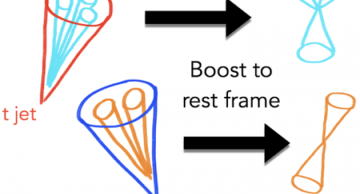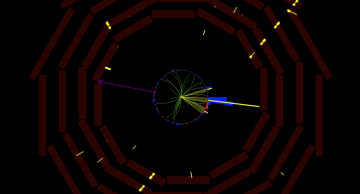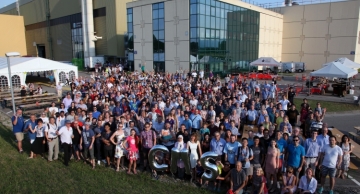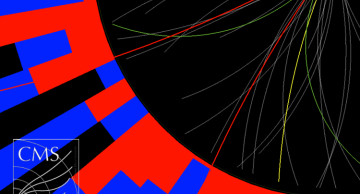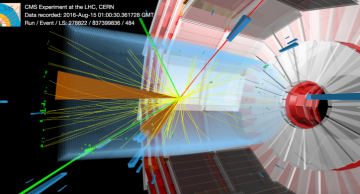While the work on improvements on the detector continues during the Long Shutdown 2, physicists are starting to reap the rewards of the LHC dataset collected in LHC Run 2. The dataset is the largest sample ever collected at a collider and equivalent…
News
|
fblekman |
Physics
Since the discoveries of the third generation of quarks and leptons starting in the 1970s, physicists have asked the natural question "Can there be more generations?". One of the first key results from the Large Electron Positron collider LEP…
|
fblekman |
Physics
Over the past century, physicists have developed a theory governing the fundamental interactions of elementary particles, known as the Standard Model of Particle Physics. Thus far, it has stood up to many experimental tests with an extraordinary…
|
fblekman |
Physics
The Standard Model of particle physics asserts that the Higgs boson generates the mass of all fundamental particles. In 2012 a new particle was discovered at the CERN LHC that behaves closely like the Higgs particle predicted by the Standard Model.…
|
fblekman |
Physics
After the discovery of the Higgs boson, CMS observed its interaction with some standard model particles like the bottom and top quark, the tau lepton, and the W and Z boson. Measuring the strength of interactions with quarks and leptons (…
|
fblekman |
Physics
How long do fundamental particles live? In the Standard Model, we know particles can have many different lifetimes; from the top quark which decays in less than a millionth of a billionth of a billionth of a second, to stable particles like the…
|
fblekman |
Physics
The High-Luminosity LHC is a major upgrade of the Large Hadron Collider that is expected to increase the luminosity by a factor of 10 beyond the design luminosity of the current LHC. This means, the data produced per year will be equal to the amount…
|
fblekman |
Physics
In November 2018 the proton-proton running of the LHC Run 2 ended. The data collected in 2018 is the largest sample ever collected at the LHC. Just under three months after the final proton proton collisions were recorded, the CMS collaboration…
|
fblekman |
Physics
The top quark is the heaviest particle in the standard model, and since its discovery in 1995 at the Tevatron collider at Fermilab, its study has become prominent in furthering our understanding of fundamental physics. At the Large Hadron Collider,…
|
lapka |
Physics
The discovery of the Higgs boson in 2012 at the Large Hadron Collider marked the beginning of a comprehensive experimental program to measure its properties. Milestones since then include the observation of Higgs boson decays to γγ, ZZ, WW, ττ as…
|
lapka |
Physics
The discovery of the Higgs boson in 2012 at the Large Hadron Collider marked the beginning of a comprehensive experimental program to measure its properties. Milestones since then include the observation of Higgs boson decays to γγ, ZZ, WW, ττ as…
|
Anonymous |
Physics
The CMS collaboration is presenting over 25 new results at the 39th International Conference on High Energy Physics (ICHEP 2018) taking place in Seoul, South Korea from July 4th-July 11th, 2018.
A key highlight is a comprehensive combination of…


